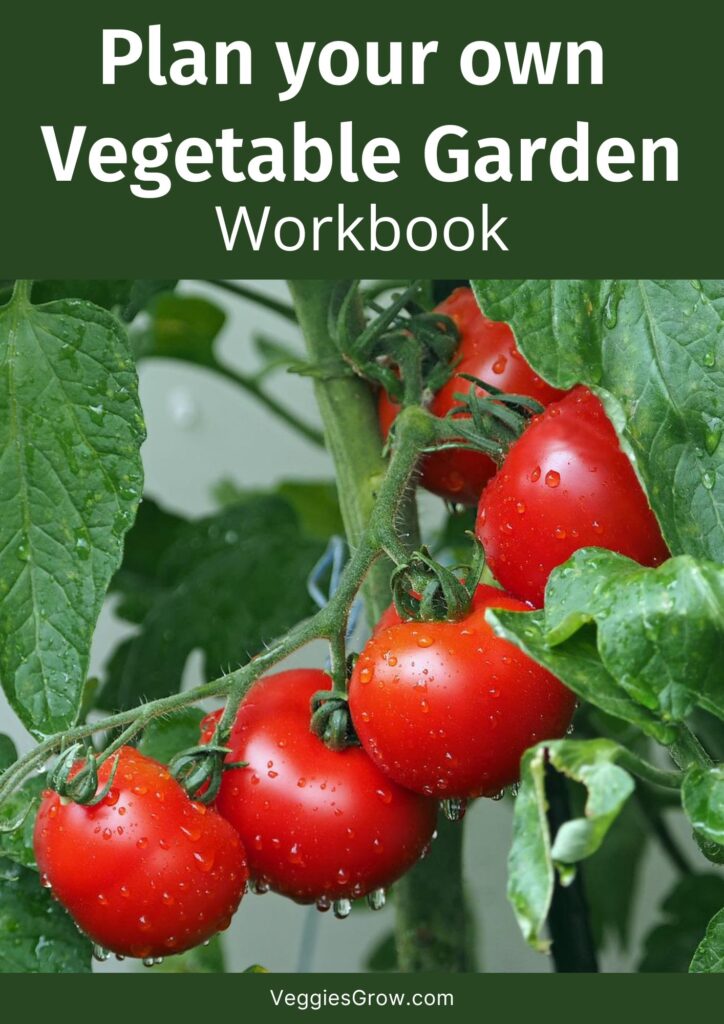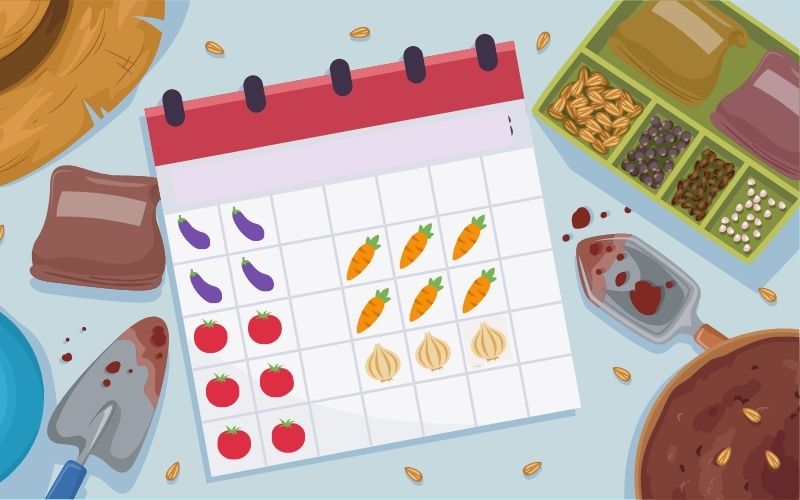Creating a layout for your vegetable garden is the last step involved in planning your organic vegetable garden. This step will bring together all the small decisions you’ve made so far.
Before you create your vegetable garden layout, you will need to have:
- Decided on the type of vegetable garden that you will be growing: Will you be growing an in-ground, raised bed, or container vegetable garden?
- Chosen the best location available to place your vegetable garden
- Chosen the types of vegetables that you will be growing this season
- Decided on the number of plants of each type of vegetable that you will need to grow
- Decided if you will be starting from seeds or transplants
- In addition, it’s recommended that you would have decided on how you will keep a record of your vegetable garden.
If you have all these details thought out, then it’s time to plan the layout of your vegetable garden.
Creating your vegetable garden layout
Step 1:
Draw the outline of the area in which you intend to start your vegetable garden. You can draw this to scale to be precise or quickly sketch the shape of the area allocated if you are short on time.
Step 2:
Mark any microclimates that you have identified in your vegetable garden.This includes areas that get a lot of shade or get a lot of sunlight, areas that are very windy and areas with sandy or clay soil.
Step 3:
Add plants that you have chosen for any particular microclimates in your garden. Remember to allocate an appropriately sized area in your garden to these vegetable plants based on the number of plants that you will be growing and the minimum spacing requirements.
Step 4:
Next, add the other plants that you have chosen to grow and mark the total area that you will have to allocate for each plant.
Step 5:
Make sure your plants have been allocated to the best possible place for them.
Here are a few tips to help you make sure that you’ve created the best possible layout:
- Place plants that will eventually grow the tallest the furthest away from the direction of sunlight. This is so that these plants will not eventually cover any shorter plants behind them.
- Make sure that you have enough room to place supports for vines and creepers.
- Keep room for footpaths so that you will be able to access the base of each plant without stepping on or damaging any other plants.
- Group beneficial companion plants that you have on your list together, while keeping plants that negatively affect each other as far apart as possible.
- Group plants that need support installed and plants that will need netting cover from pests or covering for protection from the cold or frost together so that you can easily install the structures needed.
- Group plants based on their watering. Plants such as tomatoes, peppers, and eggplant need a lot of watering but can be quite fussy about having wet roots and can easily be affected by root rot. Growing these types of plants together will help you supply them with the correct growing conditions that they need.
You may need to change your garden layout a few times until you create the best possible layout for your garden. You may need to create a first layout and then look at it again a couple of days later to make sure that you have not missed out on anything.
This post is part of a series of blog posts on the 7 steps of planning a vegetable garden. You can download the FREE workbook ‘Plan Your Own Vegetable Garden’, which will provide you with more information on each of these 6 steps and also how to plan the layout to help you plan your own vegetable garden.



